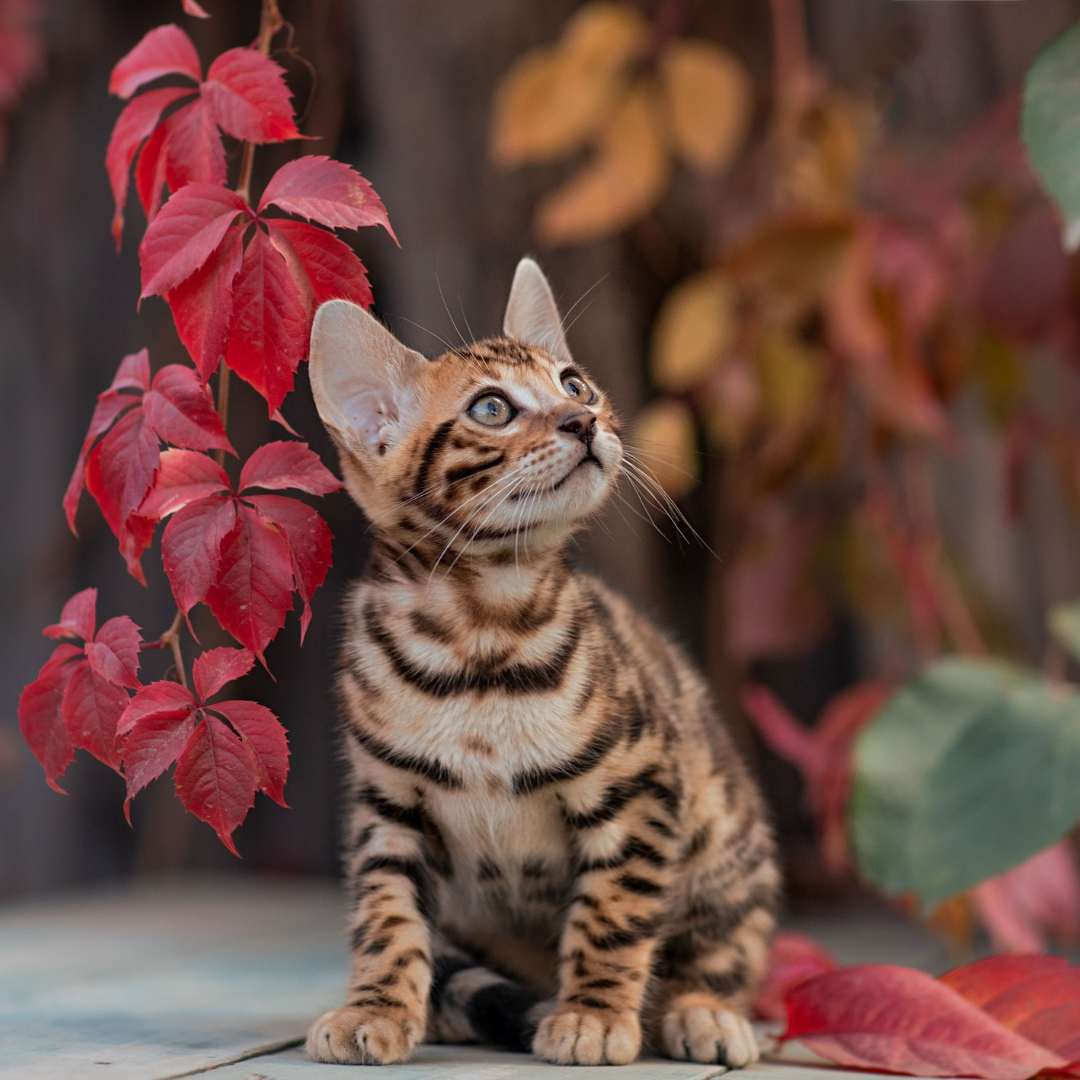
Bengal cat
Share
Introduction
The Bengal is a truly unique breed of cat with the features of small wildcats living in the forest in contrast to a loving, dependable disposition of a family pet. The Bengal can never be a delicate one with all the agility and gracefulness in that robust and muscular body that befits a jungle cat.
History
The Bengal breed originated in the USA as a hybrid of a domestic cat and a leopard cat. The result was a distinctive spotted coat, a large cat with large snappy eyes, very prominent whisker pads, longer legs, and a brilliant leopard-style marking known as the Bengal. This new version of the hybrid cat looked like a miniature leopard on the prowl.
For more details: www.outdoorbengal.com
The Bengal name takes after the scientific name of an Asian leopard cat called Felis Bengalensis. They were created during the 1950s and 1960s when purchasing leopard cats from the domestic pet stores was permissible in the US. Jean Mill, a Californian breeder, was the first to see the result of such a cross of her making. However, the leopard cat was lonely, so Jean decided to keep a black tomcat as her company and what resulted was spotted females. She then got her breeding back to her domestic father and produced a litter of solid spotted kittens. Around the same time, Dr. Willard Centerwall, at the Loyal University, was busy crossing the Asian leopard cats with the domestic cats. Thus, various breeders became interested in developing the cats as a breed, and Mill was one of them.
The International Cat Association was the first cat association to recognize the Bengal, first as an experimental breed status in 1983, with full recognition by 1991. The Bengal got recognition by the American Cat Fanciers Association, United Feline Organization, and the Canadian Cat Association.
Physical Appearance
The Bengal cat displays a physical appearance similar to a wildcat. It is large, very muscular, and sleek with a thick tail one finds at the lower end. The Bengal has a broadhead with small ears and noticeable whisker pads. Almond-shaped eyes are black-rimmed and have a thick tail tapering to a black tip. It has a distinctive thick, luxurious skin coat spotted, or marble patterned with a gold or pearl dusting effect (glitter effect), which no other breed of the cat has—this glitter effect results in a higher demand for the Bengal.
Size
This Bengal is a medium-to-large cat weighing eight to 15 pounds or more.
Personality traits
The Bengal can be very challenging at times. Being a highly active and intelligent cat, it is fun living with him. The Bengal is a friendly, confident, and a talkative cat who is always alert. Nothing goes by without his coming to know. He has nimble paws that are as good as hands, and so he loves to play games like fetch and is also good at learning tricks.
Beware of a Bored Bengal! Bored Bengal cats can switch to learning some slightly destructive habits, including switching off and switching on the light, trying to fish out of drains, or going crazy plucking CDs from the DVD player.
It won't be considered out of place if a Bengal strolls into the shower with the pet parent or jump into a water tub as it is immensely fond of playing in the water. Also, they are excellent climbers, and one finds them perched at the highest point within reach of the home. So, keep the aquariums and pond fishes away from him and install a tall cat tree or two for this energetic feline, challenging its intelligence to invest in puzzle toys.
On the rarest of occasions, one can find a Bengal sitting in the lap with that show of affection against swinging on fans or Chandeliers or swimming in the tub or pool. The Bengal would love to share your bed but also like to steal your covers.
Health Factor
The Bengals though generally healthy, are prone to genetic health issues.
- Bengals are likely to contract Distal Neuropathy, which is a nervous system disorder causing weakness in them. It can occur when the Bengals are as young as one year of age. Though many cats self-recover, many may have a relapse.
- A Bengal may get Hip dysplasia, which in its severity can cause lameness
- A kind of heart disease, Hypertrophic Cardiomyopathy is an inheritance in some breeds
- A syndrome called flat-chested kitten syndrome, which is a deformity ranging from mild to severe at times. However, those kittens who try to reach adulthood usually show no signs of it until maturity.
- From mild to severe, a hereditary dislocation of the knee cap called Patellar luxation is what one finds in the Bengals, wherein severe cases have to undergo a surgery
- Also, the Bengals are prone to a degenerative eye disease called Progressive Retinal Atrophy.
Care
The Bengal cat does require a little bit of attention as it would like to have it. The Bengals need the following care:
- This breed requires regular vaccinations, vermin control, and yearly health checkups.
- The short glossy coat of the Bengal requires periodic grooming to remove dead hair and distribution of skin oils
- Weekly brushing of the teeth is effective
- Wiping the corners of the eyes using a clean, soft, damp cloth to avoid the spread of any infection
- The litter box has to be spotlessly clean for them to continue using it
- Try keeping the Bengal indoors only to protect him from diseases from other cats, animals, and surroundings. Create a large outdoor enclosure wherein the Bengal cat can have a ball of time jumping and swinging while staying protected
- Avoid having Bengal outdoors alone for the risk of being stolen because of him being so beautiful
Conclusion
High in energy, fun-loving, playful, agile, athletic, and graceful, the Bengal is an adorable cat keeping you on your toes if you are competent enough to fulfill its need for an exercise. A smart and loving cat, that's Bengal for you.
